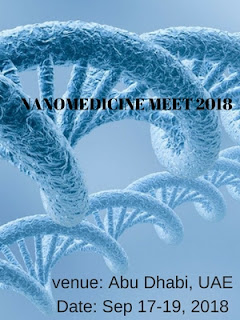Nanomedicine
is a key science of the 21st century. Although the production and use of
Nanosized particles had taken place in several ways in ancient times and
hundreds of years ago, Nanomedicine as a modern interdisciplinary science was
first established in the nineties of the last century only. The basis of this
new science derives from the development of an array of ultra-microscopic
devices and the studies of cellular, molecular and finally atomized structures
in biology, chemistry and physics in the 20th century. Nanoporous
ceramic filters were indeed already being used in the 19th century to separate
viruses, and around 1900 Max Planck and Albert Einstein produced theoretical
evidence that there must be a range of tiny particles which obeyed their own
laws. These particles could not be made visible however-the necessary
instruments for this had yet to be invented.
Modern Nanotechnology
is an interdisciplinary science concerning the tiniest of particles and their
special chemical, physical and mechanical properties at the meeting points of
physics, chemistry, biology, medicine, electronics and information technology.
In practice the special areas of nanotechnology overlap and blur the boundaries
between the natural sciences. Nanobiotechnology is concerned with molecular
intra- and intercellular processes and is of critical importance for
nanotechnology applications in medicine
Nanomedicine involves
the use of nanoparticles for therapeutic and diagnostic purposes. During the
past two decades, a growing number of nanomedicines have received regulatory
approval and many more show promise for future clinical translation. Nanoparticles
are sphere-like biocompatible materials made of inert silica, metal or crystals
of a few Nanometers in size. They are emerging as a novel class of therapeutics
for cancer treatment. Being more selective and specific toward their targets,
nanoparticles have the ability to enhance the anticancer effects and to
simultaneously reduce systemic toxicity compared with conventional
therapeutics. The majority of nanoparticle formulations that are
currently routinely used in the clinic are used for therapeutic purposes. These
therapeutic nanoparticles aim to more efficiently deliver a (chemo-)
therapeutic drug to the pathological site, while avoiding its accumulation in
healthy organs and tissues, and are predominantly based on the “enhanced
permeability and retention” (EPR) effect.




Comments
Post a Comment